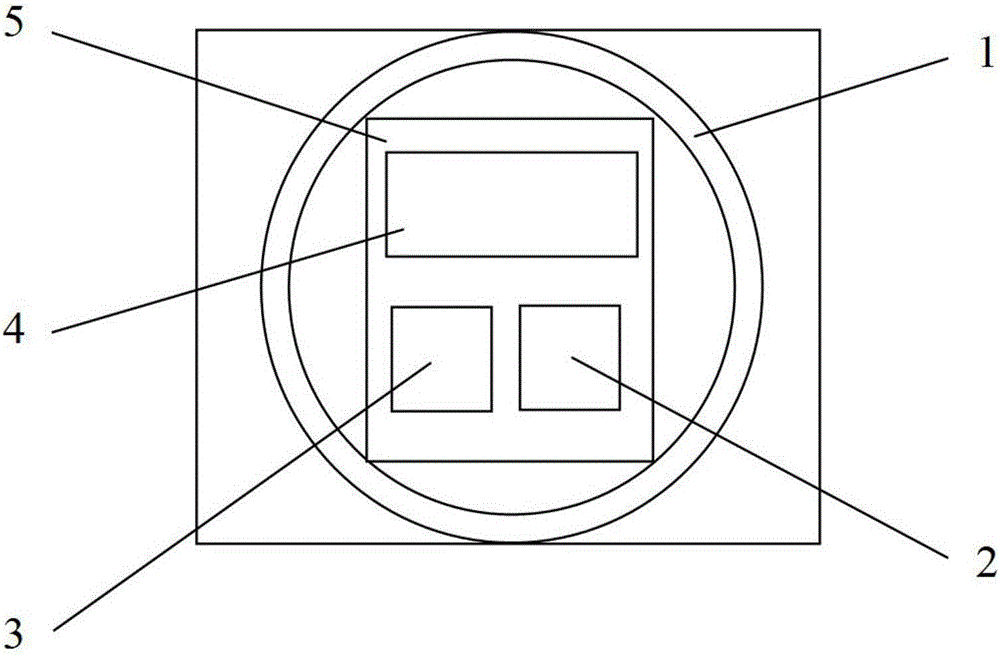Ankle type step counter based on single-shaft micro-mechanical accelerometer
A technology for accelerometers and pedometers, which is applied to measuring devices, instruments, surveying and navigation, etc., can solve problems such as complex calculation methods, high costs, and complex structures of 3-axis MEMS micro-mechanical accelerometers, and achieve simple measurement methods, Low cost, the effect of eliminating external vibration interference
- Summary
- Abstract
- Description
- Claims
- Application Information
AI Technical Summary
Problems solved by technology
Method used
Image
Examples
Embodiment Construction
[0014] The ankle-type pedometer based on the single-axis micromachined accelerometer proposed by the present invention has a structure such as figure 1 As shown, it includes: shell 1, circuit board 5, single-axis micromachined accelerometer 2, bluetooth module 3 with built-in microcontroller, and Bluetooth antenna 4; shell 1 is fixed on the ankle by a wrist strap; circuit board 4 is fixed on the on shell 1. Electronic components such as the single-axis micromachined accelerometer 2, the Bluetooth module 3 with a built-in single-chip microcomputer, and the Bluetooth antenna 4 are fixed on the circuit board 4; The input end is connected, and the signal output end of Bluetooth module 3 is connected with the signal input end of bluetooth antenna 4, as figure 2 shown.
[0015] The function of each device of this device is:
[0016] Shell 1, which is used to input the vibration generated when the sole of the foot hits the ground.
[0017] The single-axis micromachined accelerom...
PUM
 Login to View More
Login to View More Abstract
Description
Claims
Application Information
 Login to View More
Login to View More - R&D
- Intellectual Property
- Life Sciences
- Materials
- Tech Scout
- Unparalleled Data Quality
- Higher Quality Content
- 60% Fewer Hallucinations
Browse by: Latest US Patents, China's latest patents, Technical Efficacy Thesaurus, Application Domain, Technology Topic, Popular Technical Reports.
© 2025 PatSnap. All rights reserved.Legal|Privacy policy|Modern Slavery Act Transparency Statement|Sitemap|About US| Contact US: help@patsnap.com


